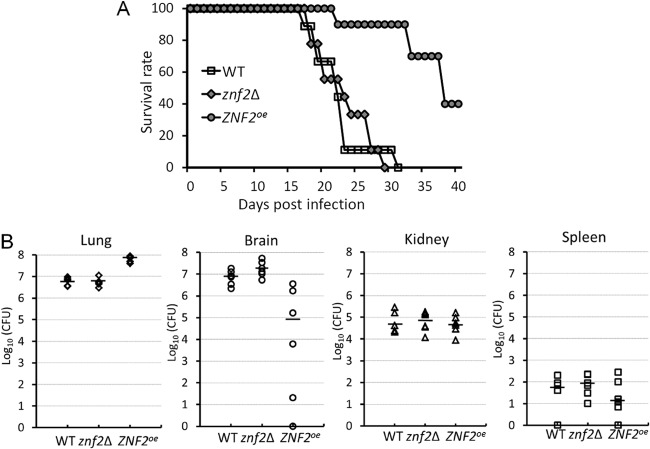Fig 9.
Znf2 mediates the fungal ability to cause fatal diseases in the murine inhalation model of cryptococcosis. (A) Mice were inoculated with 1 × 106 fungal cells intranasally, and survival was monitored for 40 days. There was no statistically significant difference between the wild type and the znf2Δ mutant. The P values were 0.07 for WT/znf2Δ, and <0.001 for WT/ZNF2oe and ZNF2oe/znf2Δ. (B) Mice were inoculated with 1 × 106 fungal cells intranasally. At the time of termination, lungs, brains, kidneys, and spleens from six animals per group were dissected and homogenized. Serial dilutions of the homogenized tissue were plated, and CFU were used to determine the organ fungal burden. The short, bold, horizontal lines indicate the medians. No colonies were recovered from a few dissected organs even with all the suspended tissue plated. Because the y axis is log10 of the CFU, “n/a” (not applicable) was used to show them as zero on the bottom of the y axis. The fungal burdens among the wild type, the znf2Δ mutant, and the ZNF2oe strain were statistically different in the lungs (P < 0.001) and the brain (P = 0.004). There was no statistically significant difference in the kidney (P = 0.874) or in the spleen (P = 0.442).

